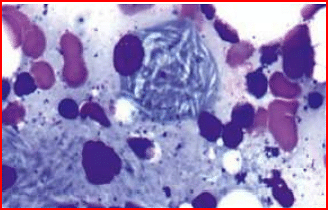Question:
In a patient with lipoprotein lipase deficiency, which of the following is increased following a fatty meal?
In a patient with lipoprotein lipase deficiency, which of the following is increased following a fatty meal?
Updated On: Jul 14, 2025
- Chylomicron
- LDL
- HDL
- Apo-A
Hide Solution
Verified By Collegedunia
The Correct Option is A
Solution and Explanation
In the context of lipoprotein lipase deficiency, it is crucial to understand the role of lipoprotein lipase in lipid metabolism. Lipoprotein lipase is an enzyme essential for the hydrolysis of triglycerides in chylomicrons and very-low-density lipoproteins (VLDL) into free fatty acids and glycerol, allowing their subsequent uptake by tissues.
When a person consumes a fatty meal, triglycerides are packaged into chylomicrons by the intestines. Under normal circumstances, these chylomicrons are broken down by lipoprotein lipase, allowing fatty acid delivery to adipose tissue and muscle.
In a patient with lipoprotein lipase deficiency, this process is impaired. As a result, after consuming a fatty meal, chylomicrons cannot be efficiently metabolized, leading to an accumulation of chylomicrons in the bloodstream.
The options provided were:
- Chylomicron
- LDL (Low-Density Lipoprotein)
- HDL (High-Density Lipoprotein)
- Apo-A (Apolipoprotein A)
Correct Answer: Chylomicron
Explanation: Due to the deficiency of lipoprotein lipase, the enzymatic breakdown of chylomicrons is blocked, causing their levels to increase in the bloodstream after a fatty meal.
Was this answer helpful?
0
0
Top Questions on Lipids
- A patient presents with xanthomas on the Achilles tendon. Which of the following is the most likely diagnosis?
- A patient with multiple tendon xanthomas is found to have a serum cholesterol level of 398 mg/dL and an LDL level of 220 mg/dL. What is the most likely defect?
- Which of the following has the lowest melting point?
- Ceramides are
- A child presents with bone pain and hepatosplenomegaly. A trephine biopsy and aspirate show the following finding. Which of the following is the most likely enzyme deficient in this condition?

View More Questions
Questions Asked in NEET PG exam
The normal pH of arterial blood is:
- NEET (PG) - 2025
- General Science
Which enzyme is deficient in Gaucher’s disease?
- NEET (PG) - 2025
- General Science
Which of the following cranial nerves is responsible for the motor innervation of the muscles of mastication?
- NEET (PG) - 2025
- General Science
The anticoagulant effect of heparin is monitored using:
- NEET (PG) - 2025
- General Science
The causative agent of malaria is:
- NEET (PG) - 2025
- General Science
View More Questions